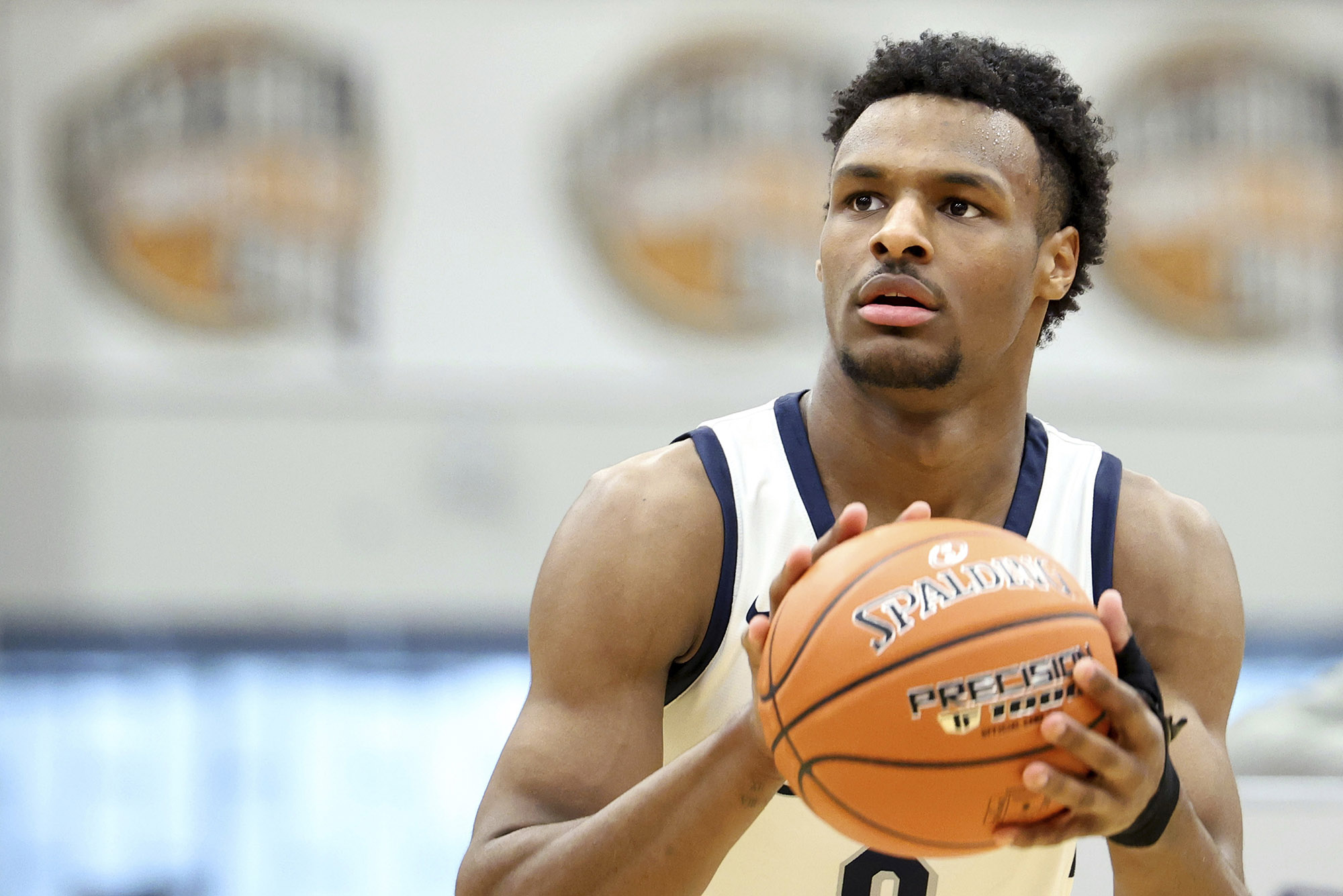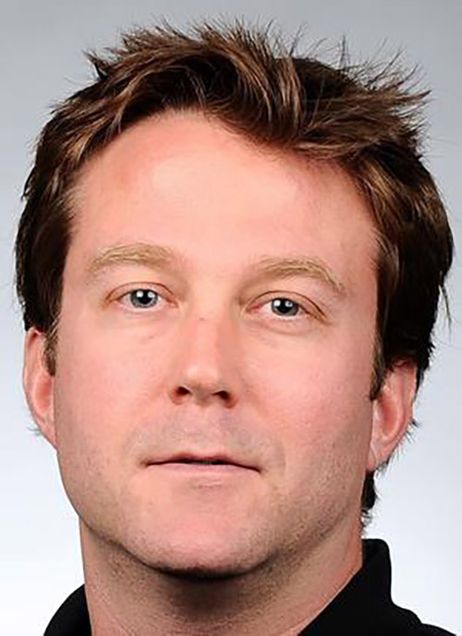Bronny James Suffered Cardiac Arrest. How Does BU Work to Protect Its Student Athletes?

Bronny James, a rising freshman and USC basketball player, hopes to play after surviving a cardiac arrest July 24. Photo by Gregory Payan/AP Photos
Bronny James Suffered Cardiac Arrest at 18—a Crisis Athletic Trainers Prepare For
BU’s head athletic trainer Brent Hamula says some heart conditions are not detectable and talks about the University’s multilayered health screening approach, designed to protect athletes
A rising college freshman, and an athlete no less, suffers cardiac arrest: that’s the news about Bronny James—18-year-old son of Los Angeles Lakers star LeBron James—who was rushed Monday to intensive care when his heart stopped during basketball practice at the University of Southern California.
The younger James is home after being discharged from the hospital. It was unclear if he would be able to join a scheduled exhibition trip the USC team planned to Greece and Croatia August 5, or if the trip is still on. One certainty: James is not the first young athlete, in prime physical condition and with no previously known heart condition, to suffer cardiac arrest without warning. The list includes college basketball star Hank Gathers (1990), Celtics star Reggie Lewis (1993), and even a young local athlete, 15-year old Preston Settles (February 2022). All three died after collapsing.

Cardiac arrest—the stopping of the heart—differs from a heart attack, which involves blockage of blood into a heart artery. According to the Mayo Clinic, people in cardiac arrest can survive “with fast, appropriate medical care… Yet sudden cardiac arrest is the leading cause of death in young athletes. Estimates vary, but some reports suggest that about one in 50,000 to one in 80,000 young athletes die of sudden cardiac death each year.”
USC, like most colleges and universities with major athletic programs, employs a full-time trainer whose job typically revolves around helping athletes nurse nagging injuries or recover from more serious ones. Only on the rarest occasions is it a job that encounters a life-or-death scenario.
BU Today discussed James’ collapse and BU’s protective procedures with Brent Hamula (CAMED’14), the head athletic trainer with Boston University’s Athletic Training Services, which is part of Student Health Services. Hamula has worked on some of the biggest athletic events around the world, from Olympic games to the Boston Marathon. He holds a master of science in healthcare emergency management from BU and studied athletic training, with a minor in exercise science and psychology, at Canisius College.
Q&A
with Brent Hamula
BU Today: What might cause cardiac arrest in an athletic 18-year-old?
Hamula: There are multiple factors that may cause a cardiac event of this type. The most common cause is often hypertrophic cardiomyopathy (HCM), which is a condition that basically decreases the heart’s ability to pump blood through the body. There are often no predisposing signs or symptoms of HCM in young, otherwise healthy athletes. Less common causes are congenital coronary artery anomalies, recent myocarditis, or factors associated with rhabdomyolysis.
BU Today: Have you ever had a student athlete go into cardiac arrest?
Hamula: As a department, we have, yes. Personally, I’ve not had this particular incident to respond to. But every day, we prepare in anticipation for an event of this type.
BU Today: What does BU Athletic Training Services do to prepare for something like this happening? Is there anything that can be discovered before a student athlete goes into arrest?
Hamula: Not all heart conditions are detectable, such as the cardiac event that resulted in [Buffalo Bills safety] Damar Hamlin’s collapse earlier this year. While we aren’t aware of the exact circumstances of Bronny James, a multitiered process that includes pre-participation physical exams, a review of cardiac-specific medical history, and electrocardiogram (EKG) interpretation from a knowledgeable care team can all help to screen for potential cardiac conditions.
Our Athletic Training Services department has an early, prescreening physical exam process that reviews their medical history and any underlying family history that could be associated with an incident of this type. The student athlete could be describing an incident that we define as a flag for further testing. We do EKG testing and interpretation with incoming student athletes as well, and that’s reviewed with our physician athletic training staff.
“Every day, we prepare in anticipation for an event of this type.”
BU Today: It’s been reported that Bronny James had cardiac screenings that came up aces—with no abnormalities found.
Yeah, unfortunately, that’s not uncommon. These are the circumstances similar to Damar Hamlin’s incident. EKGs even have been questionable at times, as far as the value of including them into routine screening.
BU Today: Similar incidents sometimes end in tragic death. Any ideas what might have saved Bronny James?
There were likely multiple factors that helped with the successful response. Preventative participation screening, access to qualified personnel, such as on-site certified athletic trainers, physicians, or EMS personnel who provide quick access to CPR, and emergency equipment such as an AED [defibrillator], along with well-developed and communicated emergency action plans, help to improve survival rates.
BU Today: After an incident like this, do athletes typically return to play at the same high level as before, or is more caution urged?
Without knowing the exact circumstances of Bronny James, I cannot comment specifically. In general, any case like this should be evaluated individually and a determination about the safe return to physical activity should involve an experienced healthcare team.
BU Today:

Comments & Discussion
Boston University moderates comments to facilitate an informed, substantive, civil conversation. Abusive, profane, self-promotional, misleading, incoherent or off-topic comments will be rejected. Moderators are staffed during regular business hours (EST) and can only accept comments written in English. Statistics or facts must include a citation or a link to the citation.